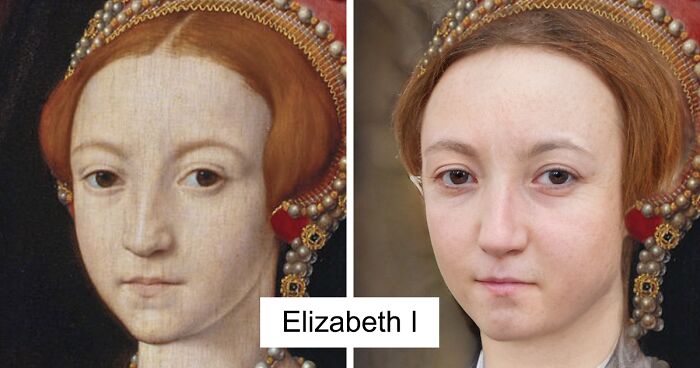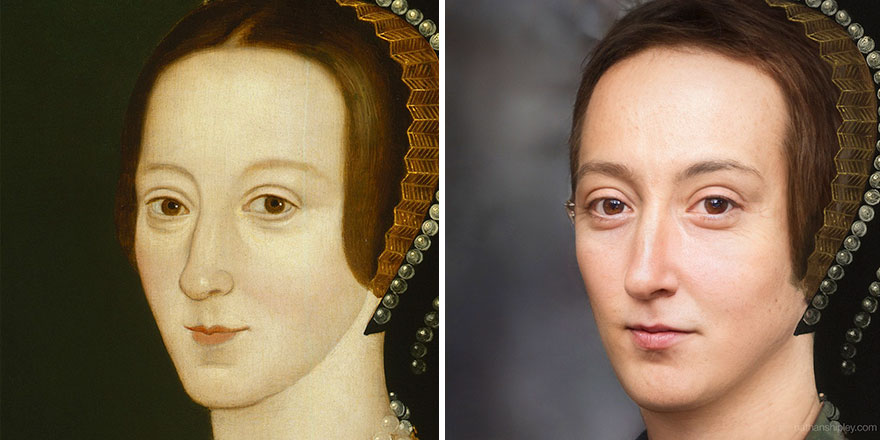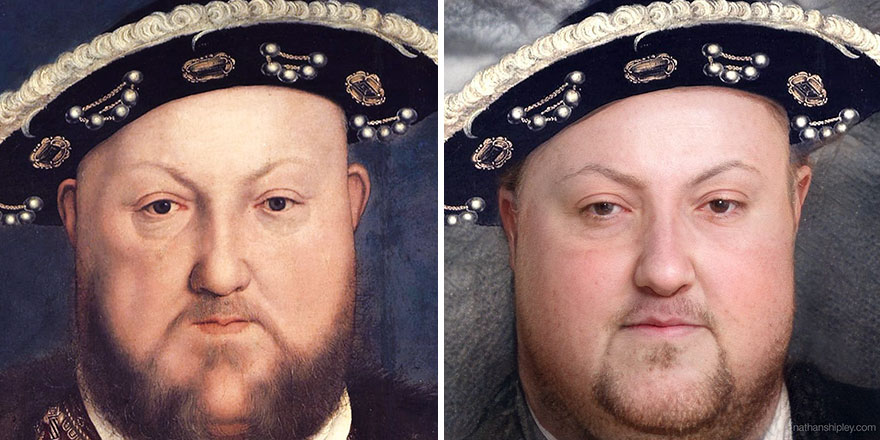
Artist Recreates Realistic Images Of Well-Known Historical Figures Using AI (11 New Pics)
In history, especially before the invention of photography, paintings have been invaluable for documenting what historical personalities looked like. Nowadays, however, the art of portrait has little use as a document, even though the artistic value hasn't changed. Paintings have an inseparable quality to them, which they can rarely ever transcend—a painting almost always looks like one. Nevertheless, with the advent of AI-generated images, paintings are still the primary source and material for drawing inspiration for recreation.
Nathan Shipley puts the paintings of famous historical personalities to good use. He uses them together with AI to recreate an incredibly realistic image, making something which was impossible even to imagine a few decades ago; namely, the possibility of seeing the "true" image of, say, George Washington, now seems incredibly close with the use of artificial intelligence. This time, Nathan the VFX artist has baked a new batch of images based on paintings and names most of us know from our history classes, mostly focusing on the British royalty, the Tudor dynasty, to be precise, along with other personalities like George Washington, William Shakespeare, etc. It isn't Nathan's first time being featured on Bored Panda. Here's the previous post on the same topic we're presenting to you today.
More info: Instagram | twitter.com | nathanshipley.com
This post may include affiliate links.
William Shakespeare
"That is the only portrait of Shakespeare that has a good claim to have been painted from life."
The artist told in a previous interview (which you can find in the link to the previous post above) about his background in VFX and animation. He realized that AI and machine learning have opened up new and unexplored possibilities in his creative efforts and saved resources. For him, it was fascinating to explore how AI worked in terms of recreating the world, and how it interprets it. "It’s great to see a finished image, but it’s even more exciting to try new code, use code in ways it wasn’t meant to be, combine different tools together, and create entirely new art through new processes," he said. Even though Nathan sees it as an open experiment, it has its own limitations. For example, AI doesn't recognize and recreate headwear, the wigs don't look exactly as they should, etc. Even though AI is powerful, it is still somewhat blind to its inconsistencies.
Anne Boleyn
"On Anne: Her beheading was ordered by her husband, Henry VIII. There is a good deal of writing and debate about the topic of Anne's appearance amongst historians. Descriptions of her by her opponents during her life make her out to be an ugly 6-fingered monster, while she is represented as beautiful in modern television; portrayed by Natalie Dormer in The Tudors. A Venetian diplomat described her at 21 as "Not one of the most handsome women in the world; she is of middling stature, swarthy complexion, long neck, wide mouth, a bosom not much raised and eyes which are black and beautiful."
I love how the Venitian diplomat's description boils down to; Slim, tan, and pretty eyes.
Henry VIII
"Henry VIII was the second Tudor monarch and was King of England from 1509 to 1547. Of the painting, the Barberini Corsini describes, "the subject’s frontal pose, his sumptuous clothes and jewelry, and his gaze staring out at the viewer all stamp the portrait with a vivid image of Henry’s grandeur and power."
Nathan is also no stranger to arts and crafts. He has always loved to take photos, draw and paint, and always had a computer by his side ever since he was little. "The combination of traditional art and technology has been a natural step for me and led to my career in VFX and animation," he said. His favorite part of creating art is the process of actually making it. To paraphrase, it's the journey, not the destination that entices him, though he is eager to see how it all turns out. And as GANs (generative adversarial networks) and neural networks are still very fresh in the scene, the journey is only beginning for him and others.
Henry VII
"Henry VII was the founder of the House of Tudor, the King of England, and the Lord of Ireland until his death in 1509."
Queen Elizabeth I (Young)
This image of Elizabeth is from 1546 when she was about 13 years old. It was painted before she ascended to be queen and is part of the Royal Collection at Windsor Castle.
Mary Tudor
"Mary Tudor, A.K.A. "Bloody Mary"
Mary earned the name "Bloody Mary" for burning protestants at the stake for heresy during her reign. She is the daughter of Henry VIII and Catherine of Aragon."
Edward VI
"Edward VI is the third Tudor monarch and succeeded Henry VIII to be the King of England from 1547 to 1553. He was the son of Henry VII and Jane Seymour."
Queen Elizabeth I (Old)
George Washington
Curve the nose down and make him look like he hates his life then it’s George
Queen Elizabeth I (Middle-Aged)
This image of Elizabeth when she was around 40 years-old is based on the "Darnley Portrait" from 1575 which is part of the collection at the National Portrait Gallery.
Anne Boleyn
Nor do I think it's Anne Boleyn either, looks more like Catherine Howard. Henry VIII's fifth wife.
You can't convert these old pictures into naturalistic images and think that you can come close to the real appearance of the portrayed. The images back then were not meant to be naturalistic at all, but heavily exaggerated to bring out the essence and character of these people. You also don't convert caricatures into "realistic images" and believe that people really look like that.
99% of the portraits that were painted (back then) were more flattering for the subject then being actually accurate.
Load More Replies...I don't think so. Most people you see on TV, movies, Instagram etc look better, but if you go down to your local Walmart and look around you'll see plenty of people who look worse than those in this article.
Load More Replies...You can't convert these old pictures into naturalistic images and think that you can come close to the real appearance of the portrayed. The images back then were not meant to be naturalistic at all, but heavily exaggerated to bring out the essence and character of these people. You also don't convert caricatures into "realistic images" and believe that people really look like that.
99% of the portraits that were painted (back then) were more flattering for the subject then being actually accurate.
Load More Replies...I don't think so. Most people you see on TV, movies, Instagram etc look better, but if you go down to your local Walmart and look around you'll see plenty of people who look worse than those in this article.
Load More Replies...
 Dark Mode
Dark Mode 

 No fees, cancel anytime
No fees, cancel anytime 





































































